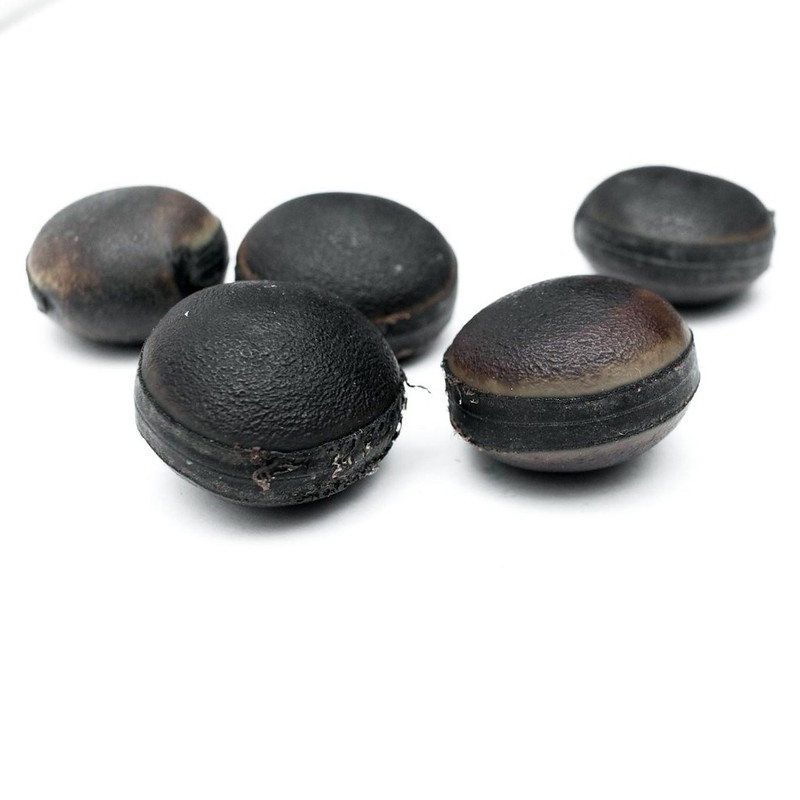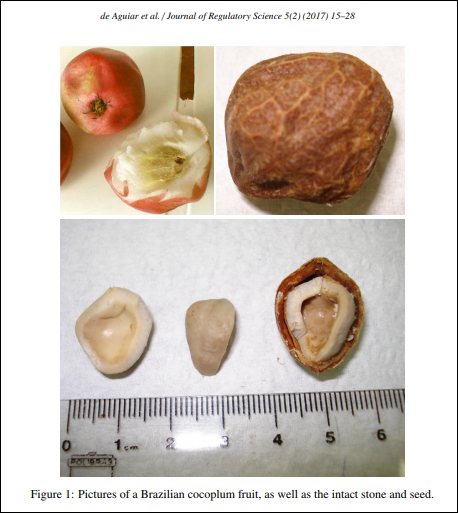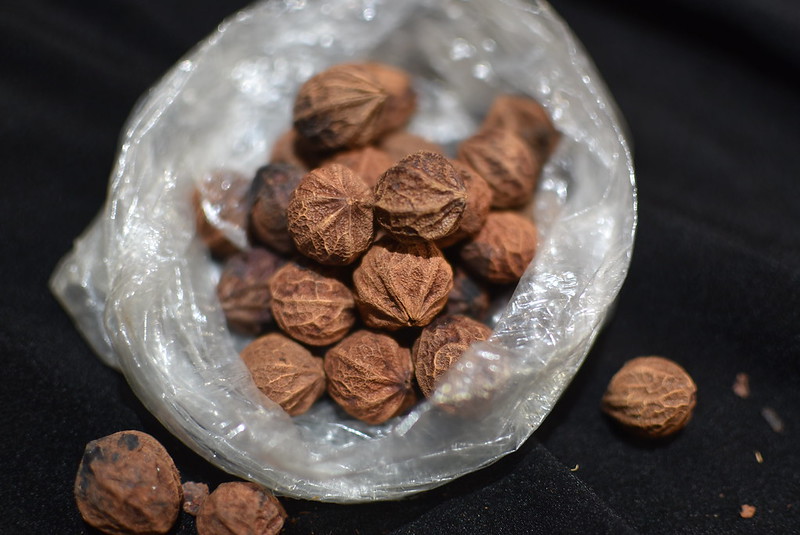Do you remember these posts I wrote?
Pepper Soup Spice Detective: Umilo/ Omilo But…
and
The Journey to Names and Provenance – Umilo & Gbafilo
In both, I tried to find the botanical names for a specific peppersoup spice, umilo/ omilo. There were some conclusions but they were confusing.
For instance, I found the supposed botanical name (Parinari excelsa) ascribed to it also given to another spice in the family, Gbafilo.
And then I thought perhaps it was related to the butternut in the walnut family – it tasted a bit walnutty and also resembled drawings in an old illustration.
But now, I can gladly share the name – Cocoplum, paradise plum, abajeru. Interestingly, a few years ago when I restarted the search, I came across abajeru but couldn’t find any photos to corroborate. Well all that changed, and let me tell you how.
Yesterday, while researching the particulars of Ukpo [Igbo], also Ibaba [Efik] – a seed used as a soup thickener, I came across a research paper which solved the mystery for me.
The International Journal of Herbal Medicine 2016; 4(3): 45-48 published a paper ‘ Spices used in Ubulu-Uku community of Delta state’ by Erhenhi AH, Lemy EE and Ashibuogwu CC. In it, Table 1 had a list of 22 spices and at 20 and 21, there were 2 which caught my eye, especially with the last column which had their ‘local names
Unbelievable! After years of searching. So so chuffed! Don’t you ever give up, you hear me? The answers find their way to you – just go right ahead and voice your questions.
Anyway, on to the facts and details:
Family: Chrysobalanaceae (cocoplum family)
Scientific name: Chrysobalanus Icaco L.
Common Names: coco plum, cocoplum, golden plum, plum cotton (pulp like cotton), cocoa plum, paradise plum, fat pork, abajeru, bajuru, icaque, icaco (alteration of Spanish icaco, from Arawak ikaku).
It arrived in the Caribbean with the Arawaks from the north of South America and spread in different parts of the island. Arawak women called the tree “Icacou“. It is also called “plum cotton” in reference to its pulp like cotton; Source – AZ Martinique
Origin: West Africa, Central America, northern South America, central and south Florida, West Indies, Mexico. Cultivated and now naturalised in Seychelles, Vietnam, Singapore, French Polynesia, and Fiji.
Uses: Fruit is edible and kernel has an edible nut which can be eaten, and is dried as an integral part of Nigerian Niger-Delta pepper soup spice blends.
Also used as ‘candles’, burning well because of the high oil content in the seeds. ‘Both in the Americas and in Africa the seeds skewered on sticks or strung on wires make natural candles, no doubt accounting for the name “Fat Pork” applied to Cocoplums the Caribbean’; Source – North Country Current
Seasons: May to September (in the Caribbean islands)
Interesting observations
- Its distribution is across tropical Africa, South and Central America and the Caribbean. Related to the transatlantic slave trade?
- I observed from some dried seeds I had which still had fruit remnants attached that the flesh/ pulp was spongy and the skin a bit leathery in the dried state.
- An oil can be extracted from the ‘seeds’. Studies suggest the oils are well suited to salad dressing and other non-heating/ cooking applications. It is thought that its high linoleic acid content would render it unstable and generate pro-oxidants; Source – TDL Journals
The photo above is the one that cracked the code. The seeds I have look very similar to this.
The last time I wrote about them, I commented on the vertical striations of the nuts which confluence in a pointed tip from a round base. Apparently, they crack open to release the seed for germination.
North Country Current says ‘The hard casing around the seed has thin elongate lines in it through which the seedling can germinate when the time is right. As the case opens, it looks like a Hibiscus capsule splitting to release its seeds.’
And that’s it! Another one, done. So grateful!










Can I know the cocoplum leafs in yoruba
I don’t know what it’s called in Yoruba. Thanks
You did a very great job
I appreciate it
You do such outstanding research…congratulations! Separately, I am delighted that you got the Saveur ’18 Blog Award – Readers Choice for Best Food Culture Blog. I was one who voted for you.
Thank you so much, Peri – step by step. It means a lot to have you rooting for me! For us!! I appreciate it x